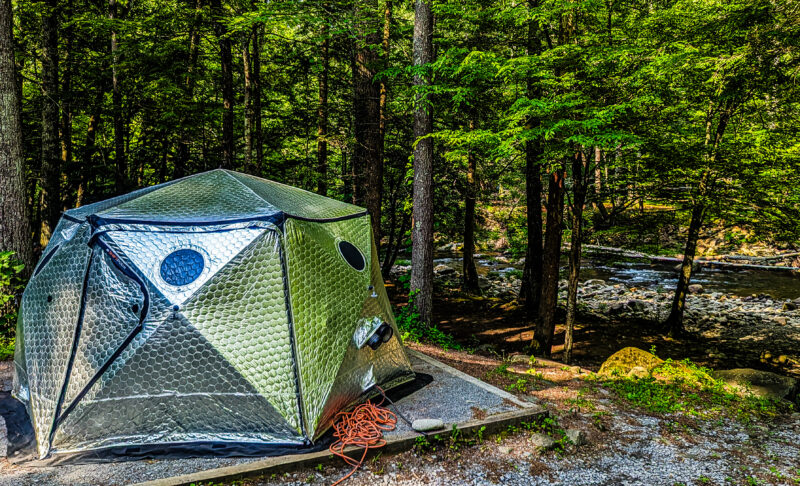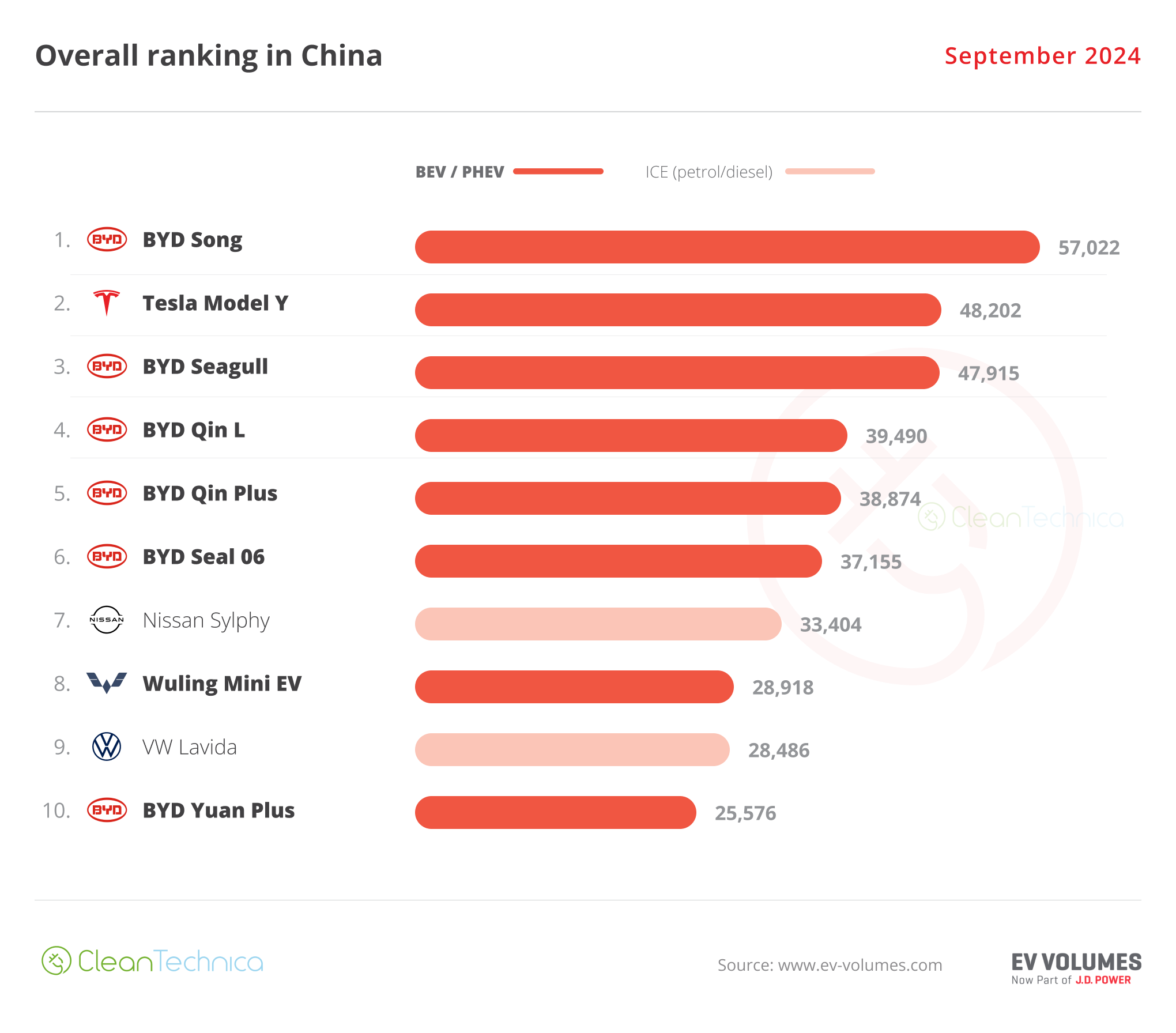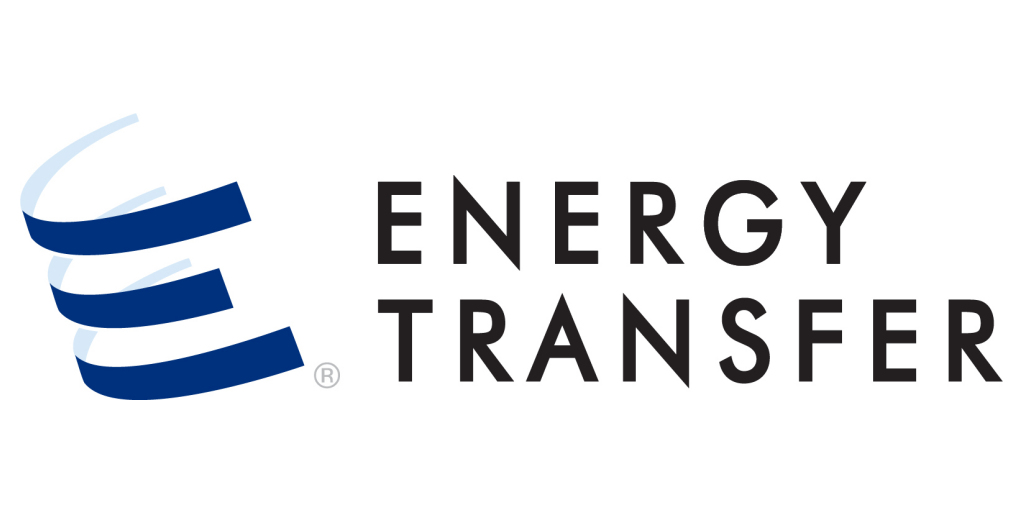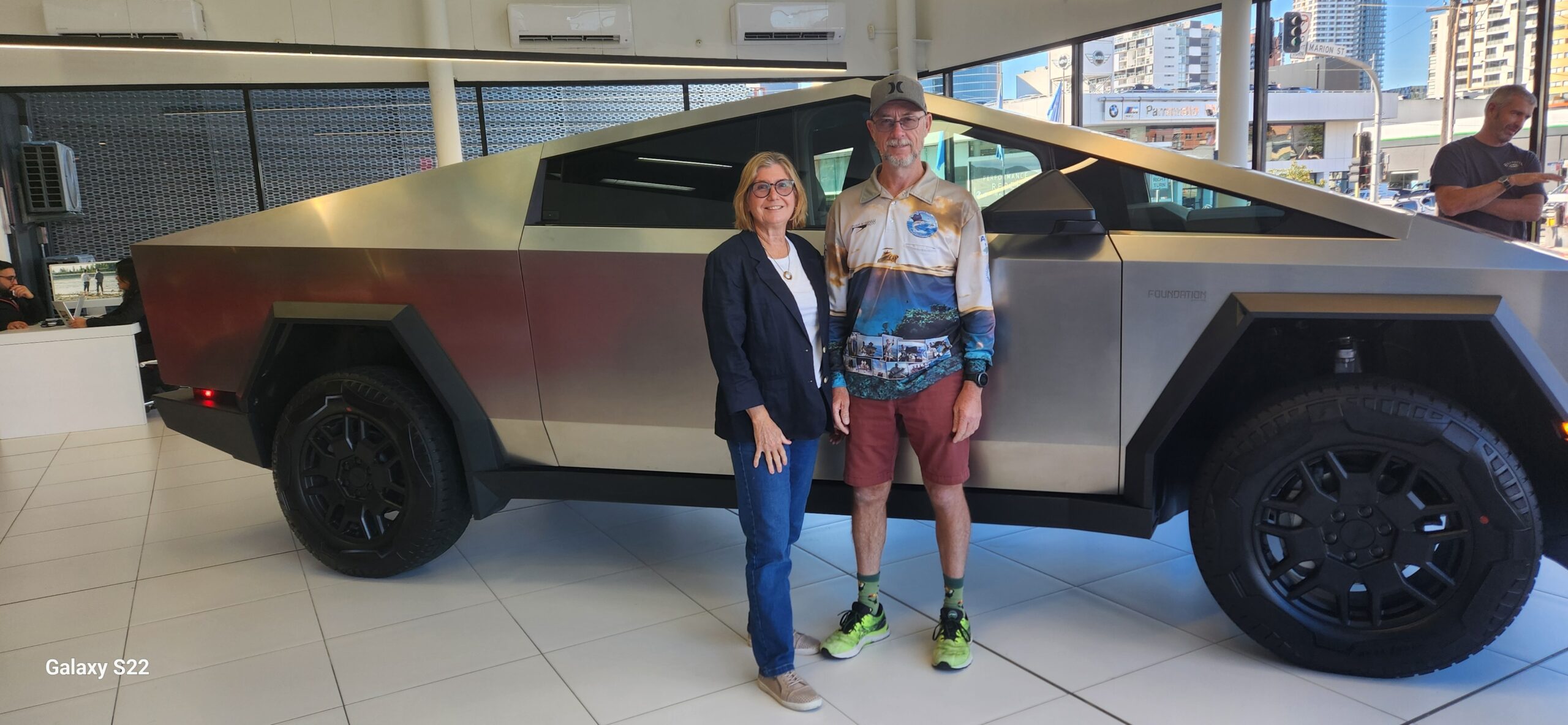Sign up for daily news updates from CleanTechnica on email. Or follow us on Google News!
It’s far from a secret that I’m not the Cybertruck’s biggest fan. I don’t hate the truck or think people who love them should be shamed or anything like that, but at the same time, it’s just not the truck for me. When I do eventually get an electric truck, I’ll likely go for a used F-150 Lightning or Silverado EV (depending on how my finances and vehicle depreciation go in the next few years).
While I don’t personally like the way the truck looks (and my functionality concerns don’t really affect the industry like they used to), I do own something else that has a very similar shiny, low-poly design:
The pictured tent is called a Shiftpod. It’s sold in three sizes, with this one being the medium. There’s also a small tent that’s laid out as a square, and a giant XL model in which you could park a small truck. It was originally designed to act as a shelter for people attending Burning Man and other festivals, and was designed to reflect away the hot desert sun. It’s also insulated, has provisions for running an air conditioner or heater (something I do), and can be set up to use convection to ventilate the shelter if you don’t want to run an AC.
More importantly, though, it sets up FAST.
There’s no need to round up the tent poles, push them through channels, and struggle with setup if it’s raining or windy. You simply climb in, push on the roof and walls, and pop them into place. If you’re anticipating wind or super hot weather, you can also stake it down or add the “blast shield” tarp over the top to reflect more solar energy away. But, on many camping trips, I don’t need to do either of those things.
While the walls are fairly thin, the insulation is still pretty good. In fact, sometimes it’s too good at trapping body heat inside. There have been times when it was a little chilly outside and I was running the air conditioner a bit to cool things off before needing to switch to heat pump in the pre-dawn hours. In 80+ degree weather, the inside is pretty intolerable unless you have a fan to draw in fresh air and push body heat out.
I personally use an EcoFlow Wave 2 AC and heat pump powered by either 1200 watts of solar panels or my EV’s battery, but there are other options. Many people run a dual hose AC unit on a generator at Burning Man, while other people build a small evaporative (aka “swamp”) cooler that requires a lot less electricity. It’s also helpful to suspend shade cloths or tarps above the tent to give some room for air circulation, with the cheapest/easiest way to do this being pool noodles under the blast shield.
When camping time is over, it’s pretty easy to take the shelter back down and put it away. You simply push the walls and roof back in, let the air out, fold it up, and put it back in the bag. The bag even has tiedowns inside to help compress the shelter down inside to make it easy to zip it up. Like any tent, you do have to watch out for moisture and let it dry out later if you have to put it away wet.
Tesla Needs To Partner With Shiftpod To Make A Better CyberTent
It seems pretty obvious that the Shiftpod and Cybertruck are an aesthetic match. The silvery color, the low-poly shape, the angles — they all just go so well together. The Shiftpod wouldn’t look out of place at all in a campsite next to the truck. People who aren’t familiar with Shiftpods would probably think it’s a Tesla tent made to match the truck!
But Tesla has a problem on its hands that could benefit from a tighter integration: setup time.
As you can see, the CyberTent is a lot like a traditional tent. It has poles, tie downs, and such, but is a little better than average with its inflatable support structure. Another upside is that it also has a platform so that you can still keep things like a camp kitchen below. All in all, it’s not a bad product at all, but it falls short of the ease of setup that most rooftop tent owners enjoy these days. Worse, it’s just not a great match for the Cybertruck’s looks. It’s big and round, canvas, and looks a lot more like a 19th century covered wagon than a 21st century cyberpunk Tesla truck.
It wouldn’t be that hard to make a CyberTent 2.0 that truly looks “cyber.” If Tesla was to work with Shiftpod, it would be easy to make something that both matches the Cybertruck and sets up way faster. The roof of the tent could pop up just like a Shiftpod roof, and the sides could pop out similarly. This would only leave the need to attach the roof and sides to the truck to keep it from being blown away.
This would have several functional advantages over the current CyberTent design. First off, you’d push out some walls, strap it down, and be good to go. It would also have better insulation than a canvas or nylon tent side, making for better use of HVAC resources that might be directed into the tent (something Tesla should consider). The existing platform (an excellent design) should be kept, and would be right at home under a different tent top.
Another great thing that could come from a partnership with Shiftpod is a far better awning. The company already makes a “connector” between tents that can act as a “vestibule” if there’s not a tent on the other end. A taller version could easily create a sheltered porch for a CyberTent that’s more rigid, faster to set up, and requires no staking when attached to the back of the truck and tent. It might even be possible to use it as a tunnel to standard Shiftpods to make room for more family at the campsite.
If you work at Tesla and read this, be sure to reach out to Shiftpod!
Images by Jennifer Sensiba.
Have a tip for CleanTechnica? Want to advertise? Want to suggest a guest for our CleanTech Talk podcast? Contact us here.
Latest CleanTechnica.TV Videos
CleanTechnica uses affiliate links. See our policy here.
CleanTechnica’s Comment Policy






